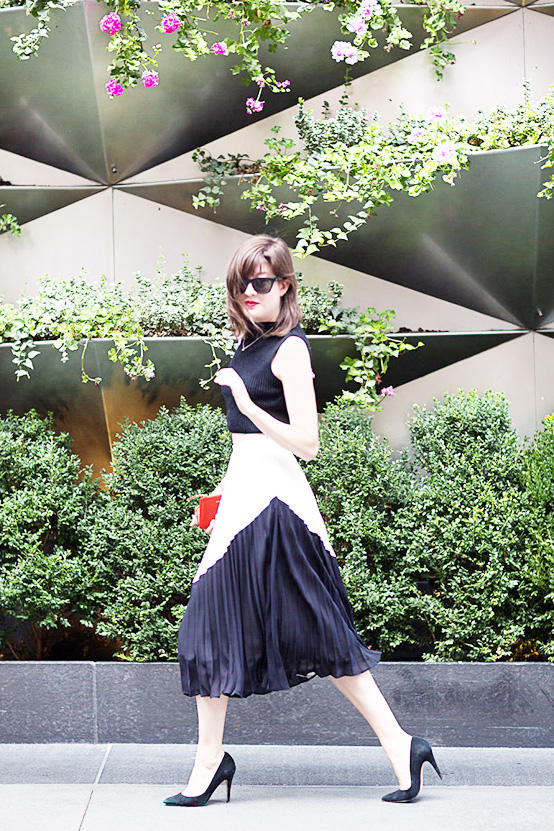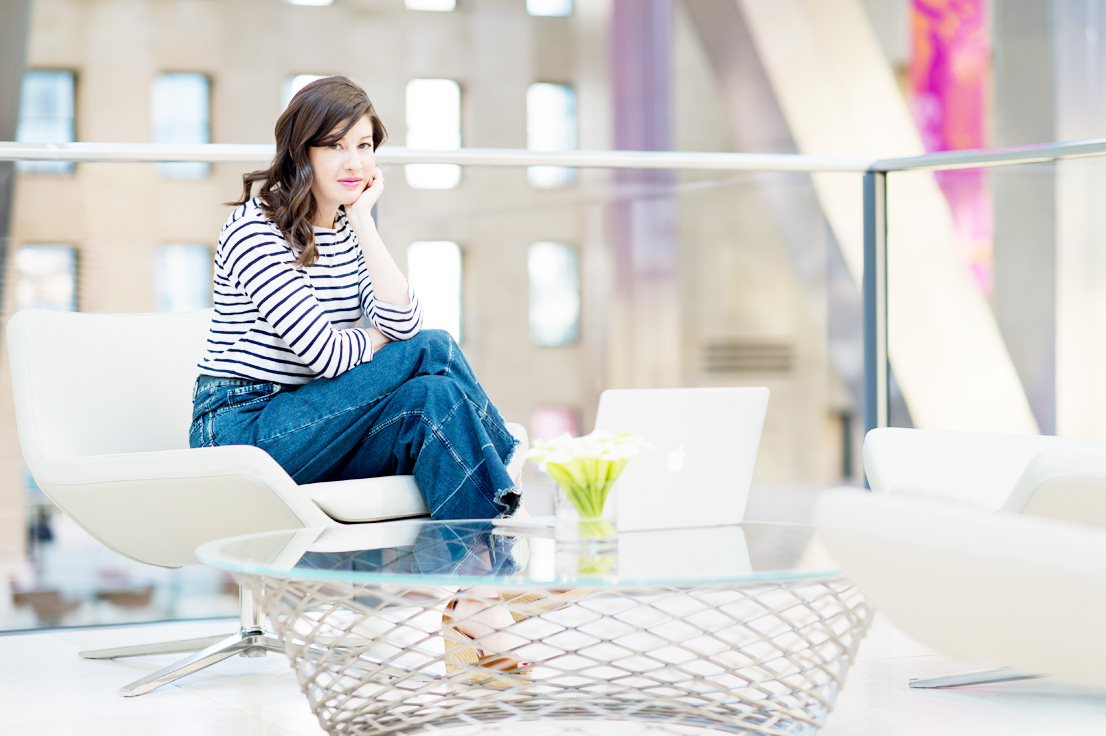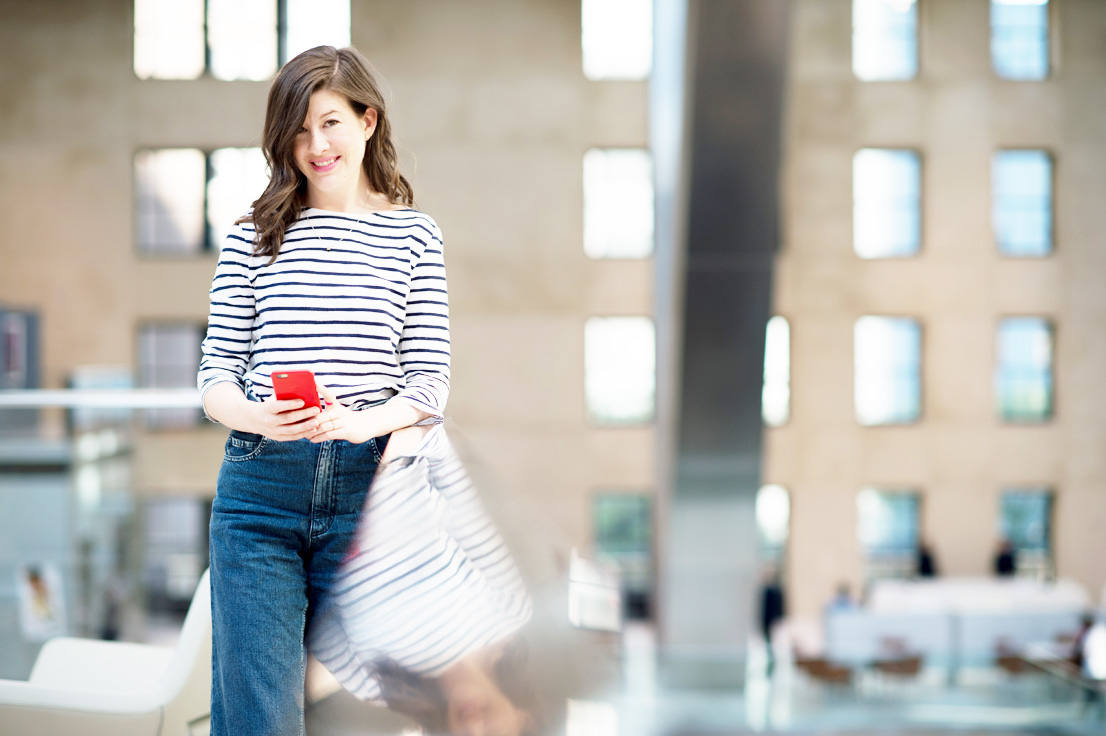I chose English at college because I always liked reading books and writing and it seemed like I’d get to do a lot of that if I became an English major. That was true, of course, but would have been true for many courses. I wasn’t sure what I wanted to do when I was 18 (does anyone?) and I wasn’t sure what I wanted to do when I graduated at 22 either. But I will say that all the reading and writing I was required to do as an English major provided me with a strong foundation for writing and editing as a career. The experience I had working at a big daily newspaper was invaluable too. I learned that I had to be fearless in my reporting and I learned how to write quickly and succinctly. I don’t think that the lessons I learned are ones that can only be gleaned through ‘traditional journalism’ though. I think standards and ethics of reporting and writing can be taught, upheld and maintained in digital media as well.
I ended up at New York Daily News the way I think a lot of people land a job they really want: some luck and a lot of hustle. After spending a few years working at an educational non-profit and half-assedly studying to take the LSATs to go to law school (it seemed like a secure career path), I decided to try journalism instead. I listened to a lot of NPR while I was at work and I thought: hey, maybe I can do what they’re doing. So instead of going to journalism school, I applied for and got a small scholarship at a semester-long long-form documentary journalism school called The Salt Institute for Documentary Studies in Portland, Maine. When I got back to New York, after a brief stint at a never-launched women’s magazine, I got a day job to pay the bills and pitched my heart out. Eventually, thanks to acquaintances and people I knew there, a few editors at the Daily News started responding to my pitches and assigning me stories. That lead to a freelance trial, a full time job as an editorial assistant in the features department, and eventually a features reporter gig. As a features reporter I covered everything from education to elections to fashion week. I styled fashion shows and travelled all over the city to report stories. I learned by doing and I had to learn fast. It was the best journalism school I could have attended.
[show_shopthepost_widget id=”911400″]
I’m a firm believer that fear is useful. At our pitch meetings at the Daily News, if you didn’t come prepared with several well-researched viable story ideas, my very intimidating boss would kick you out. That fear made me incredibly adept at finding and creating story ideas. Similarly, daily deadlines forced me to abandon all fear or discomfort in talking to strangers – on the street, on the phone, wherever. The story has to get done. Full stop. Sometimes I get frustrated at a generation that’s less used to talking on the phone and are reluctant to really go after a story. Just pick up the phone! Go out there! Talk to people! Most people want to talk. The worst thing that happens is someone tells you no. That’s not so bad in the end.
The conversation about the death of print journalism has been going on for years. It was still a robust conversation in 2010 when, after several rounds of buyouts, I decided I should look at digital opportunities to ensure the longevity of my career. Fashionista is one of the sites I read to get story ideas. When I saw that one of their editors was leaving (my now-close friend Britt Aboutaleb), I emailed Britt and Lauren Sherman and the rest is history. When I got to Fashionista, it was a two-person site. When I left there were six of us. I went from blogging four posts a day to overseeing the site and its growth (in readership and content velocity) and direction. Original reporting was always a priority, as was maintaining that playful voice – I still feel that you can’t take fashion too seriously. This is not to downplay its significance as a massive industry that warrants coverage – but a little self-deprecation is never a bad thing.
Oh my goodness, the digital space has changed dramatically since I first started. You could explain it in several books or at least a graduate thesis. But I’ll say that from when I was writing the occasional web story for the Daily News in 2007 to now, social media has revolutionised the way we consume the Internet. What keeps me inspired about it now is the ability to be nimble, react quickly and create content that is part of and drives the cultural conversation, figuring out how to tell stories on multiple platforms.
I have always loved the ELLE brand. I felt it spoke to women like me: smart, ambitious, someone who cares about fashion but it wasn’t “everything,” and it felt accessible in a way that some of the other, ahem, leading glossy fashion brands, didn’t. I wanted to learn what it was like to operate at a big company for an international brand. I wanted to understand the way marketing, editorial and overall strategy works at a brand that is so recognisable and influential. As editorial director of ELLE.com, I oversee everything under that umbrella – that includes content creation, social strategy, but also includes helping to strategize marketing campaigns too. My mind is always buzzing, I always have a million tabs open (it gives a lot of people a lot of anxiety) and I’m always thinking of story ideas and bouncing them off smart people.
 At Fashionista, I increased traffic from 250,000 monthly unique users to nearly two million and I’ve tripled traffic at ELLE.com since I started. First and foremost, I credit my incredibly hardworking, super smart, and super funny team – they live and breathe the Internet, and they’re always thinking of new ways to contribute to the daily conversation online. When I’m hiring or commissioning writers I look for good ideas. A good idea – a well-researched and thought-out pitch – tells me that the writer is informed, can make a persuasive argument, and understands the site. I’ll leave advice on developing your writing style to Mark Twain: “Don’t use a five-dollar word when a fifty-cent word will do.” If I can see the effort, the reader will be able to too.
At Fashionista, I increased traffic from 250,000 monthly unique users to nearly two million and I’ve tripled traffic at ELLE.com since I started. First and foremost, I credit my incredibly hardworking, super smart, and super funny team – they live and breathe the Internet, and they’re always thinking of new ways to contribute to the daily conversation online. When I’m hiring or commissioning writers I look for good ideas. A good idea – a well-researched and thought-out pitch – tells me that the writer is informed, can make a persuasive argument, and understands the site. I’ll leave advice on developing your writing style to Mark Twain: “Don’t use a five-dollar word when a fifty-cent word will do.” If I can see the effort, the reader will be able to too.
Every day we’re striving to create that perfect mix of content that’s smart and silly, offers a service, makes you think, makes you giggle, and informs. I think if you strive to do that in a way that that feels authentic, readers will come. Having that mix of content is so important to me – it should feel like a great conversation with a good friend: you gossip a little, you learn something, maybe you cry a little, you definitely laugh, you find a new dress or shoe or coat that you might want to buy, and you learn how to contour.
Relationships in the industry are important and I just do my best to be professional and polite with everyone. You never know who might be your boss someday – even your intern. And I seek our opportunities to learn from those with more experience, whose careers I admire. Being able to listen, learn from, and observe ELLE’s editor in chief, Robbie Myers, has been truly invaluable.
Lauren Sherman is one of my most trusted peer mentors (and one of my close friends!). My other former Fashionista colleagues Britt Aboutaleb and Hayley Phelan are too. We all help each other navigate our career paths. The first real job I had in journalism was as a fact checker for a weekly women’s mag. It folded before it launched, two weeks after I started working there. But it was there that I was introduced to Jo Piazza and Jess Grose, both of whom became close friends and invaluable mentors (and contributors to ELLE.com). It was Jo that gave me my first freelance assignments at the Daily News, and has generally encouraged me to go for it.
Photographs by Tyler Jo/Elle.com exclusively for The Lifestyle Edit


